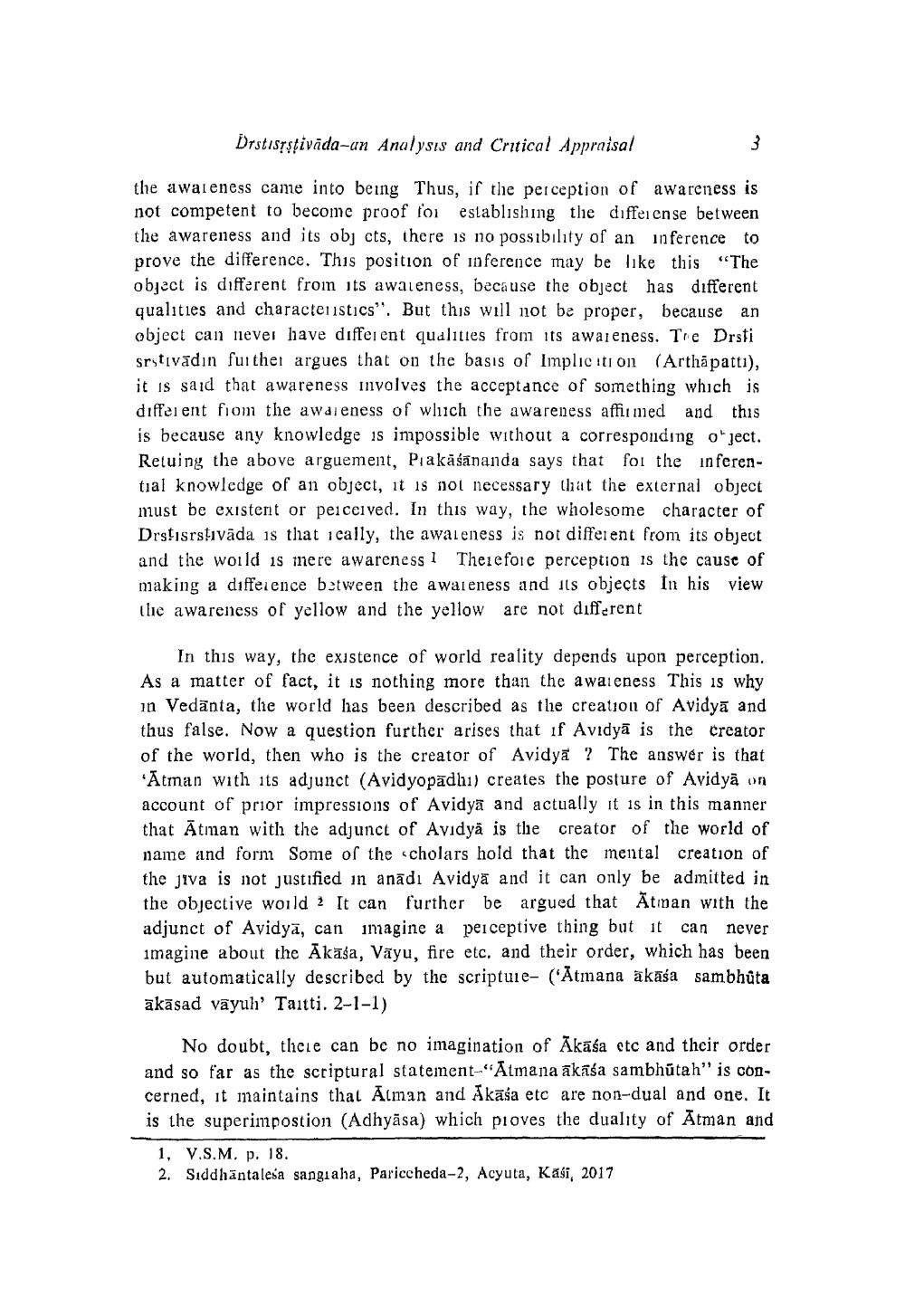________________
Drstisīstivāda-un Analysis and Critical Appraisal
the awareness came into being Thus, if the perception of awareness is not competent to become proof loi establishing the differense between the awareness and its obj cts, there is no possibility of an inference to prove the difference. This position of inference may be like this "The object is different from its awareness, because the object has different qualities and characteristics". But this will not be proper, because an object can never have different qualities from its awareness. The Drsti srstivādın further argues that on the basis of Implication (Arthāpatti), it is said that awareness involves the acceptance of something which is diffei ent from the awareness of wlich the awareness affirmed and this is because any knowledge is impossible without a corresponding oject. Retuing the above arguement, Pakāśānanda says that for the inferential knowledge of an object, it is not necessary that the external object must be existent or peiceived. In this way, the wholesome character of Drstısrstivāda is that ically, the awareness is not different from its object and the world is mere awareness 1 Therefore perception is the cause of making a difference between the awareness and ils objects in his view llie awareness of yellow and the yellow are not different
In this way, the existence of world reality depends upon perception. As a matter of fact, it is nothing more than the awareness This is why in Vedānta, the world has been described as the creation of Avidyā and thus false. Now a question further arises that if Avidyā is the creator of the world, then who is the creator of Avidyā ? The answer is that Atman with its adjunct (Avidyopādhi) creates the posture of Avidya on account of prior impressions of Avidyā and actually it is in this manner that Ātman with the adjunct of Avidyā is the creator of the world of name and form Some of the scholars hold that the mental creation of the jiva is not justified in anādı Avidyā and it can only be admitted in the objective world 2 It can further be argued that Ātman with the adjunct of Avidyā, can imagine a perceptive thing but it can never imagine about the Ākāša, Vāyu, fire etc. and their order, which has been but automatically described by the scriptuie- ('Atmana akasa sambhůta akāsad vāyuh' Taitti. 2-1-1)
No doubt, there can be no imagination of Ākāśa etc and their order and so far as the scriptural statement-"Almana akaśa sambhūtah" is concerned, it inaintains that Alman and Akāśa etc are non-dual and one. It is the superimpostion (Adhyāsa) which proves the duality of Atman and
1, V.S.M. p. 18. 2. Siddhantalesa sangi aha, Pariccheda-2, Acyuta, Kasi, 2017




